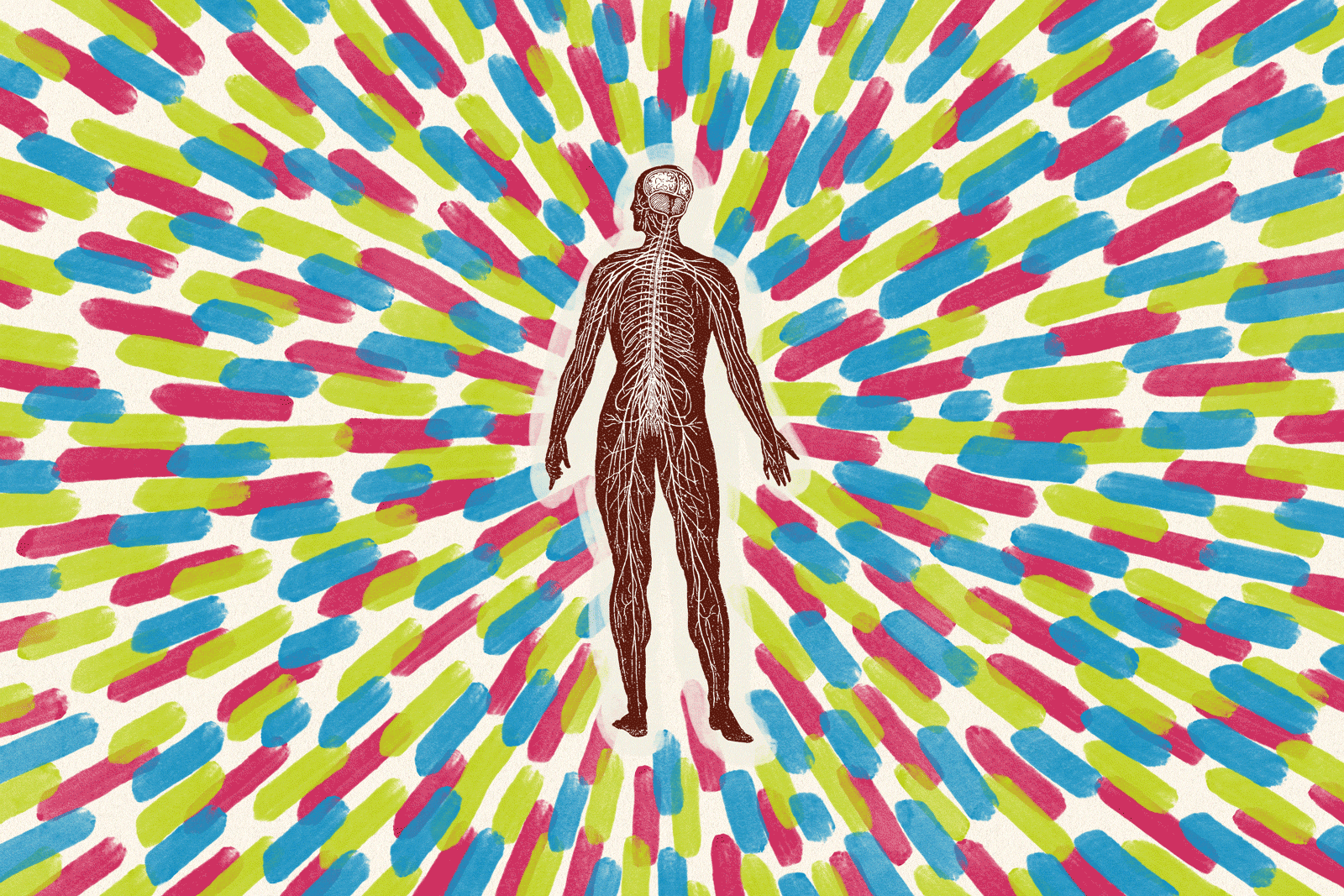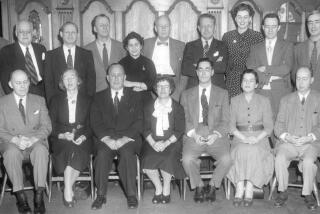MADNESS IN AMERICA: Cultural and Medical Perceptions of Mental Illness Before 1914.<i> By Lynn Gamwell and Nancy Tomes</i> .<i> Cornell University Press and Binghamton University Art Museum: 182 pp., $39.95</i>
- Share via
Earlier generations of Americans understandably viewed madness as a frightening and mysterious disorder, as we do. Its most extreme manifestations--wild ravings, perturbations of the senses, deep depressions--were profoundly disturbing and disruptive events. The mad appeared, by turns, terrifying and disgusting, impervious to correction and impossible to control, people whose behavior threatened symbolically and practically the fundamental principles of organized social life. Above and beyond their own suffering and the grave social and economic costs they imposed both on their families and on society at large, the mentally unbalanced constituted a perpetual and troubling reminder of the precariousness of the rule of reason.
The insane were thus a source of bewilderment, anguish and fear. Oddly enough, though, they were simultaneously the objects of fascination and fantasy. Perhaps the persistence of such complex and contradictory attitudes helps to account for the extraordinary variety of discourses on mental disorder that one can trace in all periods of American history. Certainly, it has provided Lynn Gamwell and Nancy Tomes with a rich and rewarding territory to explore and, by and large, they have made the most of the opportunity, producing an invaluable appraisal of lay and professional perceptions of mental illness in the 18th and 19th centuries.
“Madness in America” constitutes an impressive first installment of a new series of “Cornell Studies in the History of Psychiatry.” It is first of all an extremely handsome volume; its multitude of illustrations (many of them in color) are superbly reproduced and carefully integrated with its double-columned text (though it would have been nice to have had an index of all these pictures, to help the reader to relocate a particular image). Squarely aimed at an audience of nonspecialists, the book is the product of a fruitful collaboration between Gamwell, who is an art historian and museum curator, and Tomes, who is a historian of medicine. It ranges broadly across both popular and elite culture. It explores the shifting opinions and practices of those charged with the treatment and confinement of the insane and seeks to capture the perspectives of those victimized by this protean disorder, both patients and their families.
Gamwell and Tomes originally intended to produce a volume that traced “the treatment practices of three parallel traditions: Native American, Anglo American, and African American.” In practice, this ambitious goal proved impossible and for the most part (with occasional genuflections toward alternative traditions), they have focused their attention on mainstream white American medicine, which in this historical period means essentially asylum medicine. Within these generous confines, however, the authors have managed to unearth an evocative and wide-ranging array of material objects, often obscure or hitherto overlooked, which, taken together, provide an engrossing overview of a multifaceted and extremely complex history.
The book’s images are by turns striking, distressing and poignant--even, on occasion, amusing. Typical is an array of pictures illustrating the extraordinary variety of techniques deployed to master the mad and perhaps restore them to some semblance of sanity. There are, of course, the chains, cuffs and straitjackets that remained a standard response to the threats posed by the raving and the suicidal; throughout the period Gamwell and Tomes survey, they are pictured in advertisements provided by their manufacturers and in collections preserved from a variety of asylums.
There are also more ingenious devices concocted by the mad-doctors to whom their care was entrusted: The “tranquilizer” invented by Benjamin Rush, one of the signatories of the Declaration of Independence and the most prominent physician of the Revolutionary War period, was a sturdy wooden chair fixed to the floor with devices to immobilize the patient’s arms, legs and trunk, a headpiece to shut out light and sound and a commode to allow the trussed-up madman to relieve himself while confined. The Utica crib, invented at the New York State Lunatic Asylum at Utica, was a wooden contraption with a tightly fitting lid that kept the recalcitrant lunatic safely sequestered at night. Also pictured are the tubs to which patients were consigned to receive the benefits of “hydrotherapeutics,” streams of hot and cold water that were directed to various parts of their anatomy. Other machines were devised in the late 19th century to deliver electric shocks and stimulate the nerves.
Then there were the brain salts and nerve tonics the patent medicine industry peddled by the ton to an anxious clientele of hypochondriacs and neurasthenics, who were understandably eager to treat the symptoms of brain fatigue and nervous strain lest their troubled mental state degenerate into frank insanity. For who could contemplate with equanimity being locked up in one of the burgeoning museums of madness to which 19th century America consigned the chronically crazy? The sprawling complexes that by the turn of this century might contain several thousand patients at a time were filled with pathetic creatures lingering out their lives in the shadows of striking and sinister architectural forms that were unmistakably sui generis and still constitute the Victorian loony bins of our gothic nightmares.
Nor do Gamwell and Tomes neglect the human beings who populated this expanding empire of asylums. We are presented, for example, with portraits of the superintendents who exercised authoritarian and near-autocratic power over a caste-like social system. With their evident idiosyncrasies and singularity, they show a distinctive contrast to the serried ranks of the attendants, men and women whose existence turns out to have been almost as constrained by the peculiar routines of the asylum as was the existence of the untouchables with whose care they were charged.
Elsewhere, we encounter cartoons depicting the mad and their (mad) doctors; patients’ self-portraits and the nightmarish landscapes some of them painted; pictures of hypnotists at work and of the phrenological heads once used to provide insight into the anatomical roots of mental troubles; photographs of Lucy Ann Lobdell, an upstate New Yorker confined in Willard Asylum as mad when found to be impersonating a man (a role she had carried off successfully for many years); and examples of literary, musical and dramatic representations of distraction. We observe patients busying themselves in the whirl of an asylum dance or exercising to pass the hours and view others sunk in misery and despair, rotting in the back wards. Perhaps most hauntingly of all, we come across a photograph of a bunch of keys, fashioned from wire and scraps of metal by inmates of the Winnebago State Hospital in Wisconsin, in desperate but unavailing attempts to escape their fate and to return to the world of the sane.
The book’s text, though unable to match the dramatic power of its visual images, provides a solid and sometimes striking overview. Tomes has contributed extensively to the history of psychiatry over the last two decades, and one assumes that she is largely responsible for a synthesis that sure-handedly touches on most of the important issues and controversies that marked these centuries. The words and images complement each other extremely well, and the authors have largely succeeded in their endeavor to integrate the two, rather than using pictures as simply an illustration of the written word.
Gamwell and Tomes have deliberately eschewed the scholarly controversies that have roiled the history of psychiatry in recent decades. For the most part, this is a defensible and sensible strategy for a volume like this one, and certainly no one could reproach them for failing to draw upon a wide spectrum of recent historical work in framing their approach to the subject. Inevitably, though, given the shame and stereotyping that sadly are so frequently attached to madness, coupled with the authors’ own admirable concern “to maintain a respectful attitude toward the mentally ill,” the text frequently seems to be walking a verbal and visual tightrope. The announced intent “to avoid sensationalism, without lapsing into a monotone” and “to take all sides into account” accurately signals the most pressing problem their approach courts: that the desire to avoid giving offense may result in a sanitized history.
To their credit, it is a danger Gamwell and Tomes mostly avoid, the major exception, strangely enough, coinciding with their abandonment of the past for some brief comments on the contemporary scene. I suspect that those familiar with the nightmare world of the deinstitutionalized schizophrenic will recoil at concluding paragraphs that celebrate, with no sense of nuance or irony, the “striking improvements today in the psychiatric treatment of mental illness” and that refer to the advent of mass prescription of the phenothiazines (the source of symptomatic relief, to be sure, but also well known for producing an epidemic of so far incurable iatrogenic illnesses) as an unproblematically “miraculous” achievement of modern medical science. Surely, the sobering historical record traversed in these pages ought to have cautioned against such a naive and one-sided perspective on the realities that confront the gravely mentally ill.
That serious reservation set to one side, this is an engrossing and beautifully produced volume that deserves to find a wide readership: handsome enough to adorn the coffee table, disturbing enough to shake our complacency and perhaps to provoke reflection on a perennial problem we have yet to solve.
More to Read
Sign up for our Book Club newsletter
Get the latest news, events and more from the Los Angeles Times Book Club, and help us get L.A. reading and talking.
You may occasionally receive promotional content from the Los Angeles Times.







